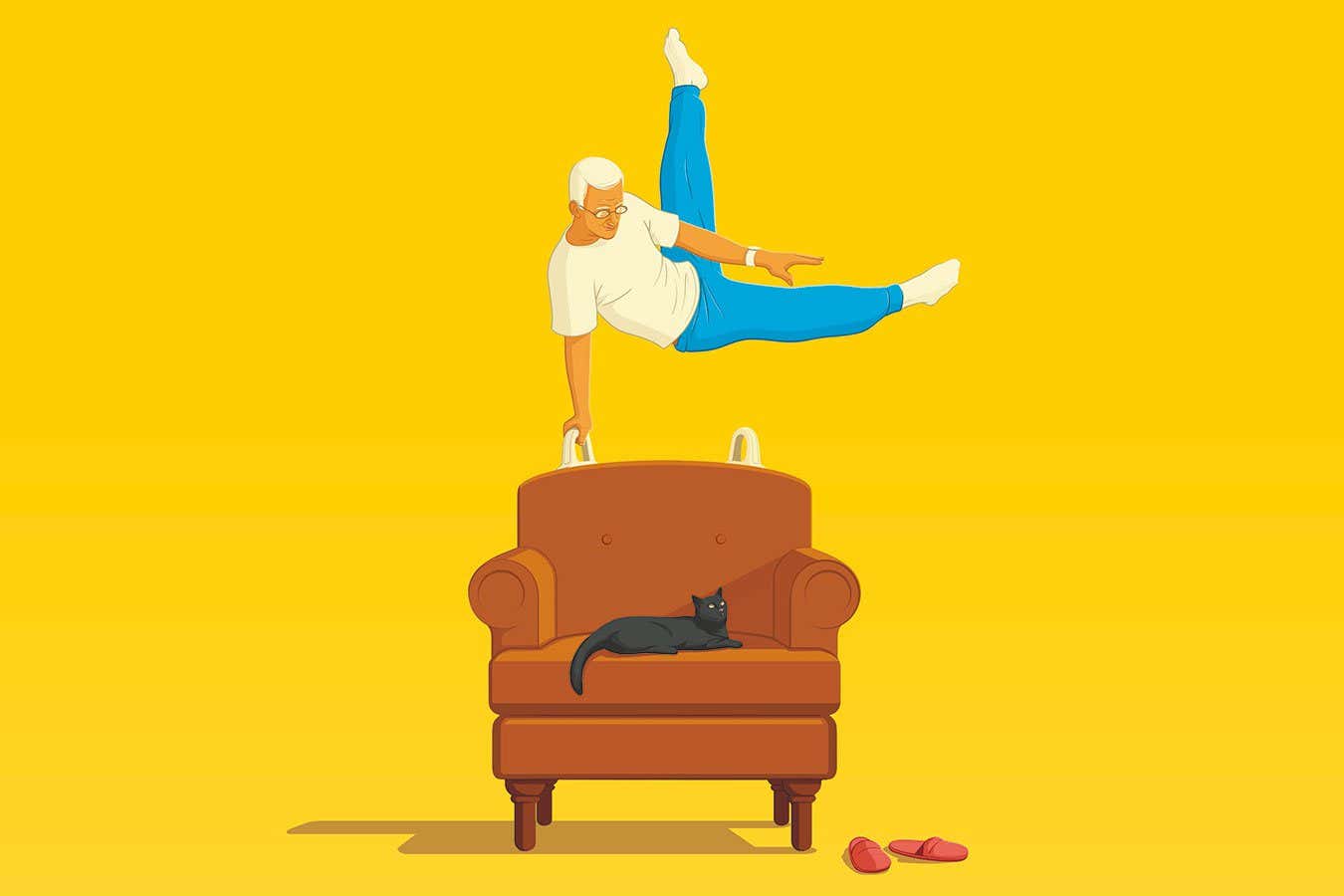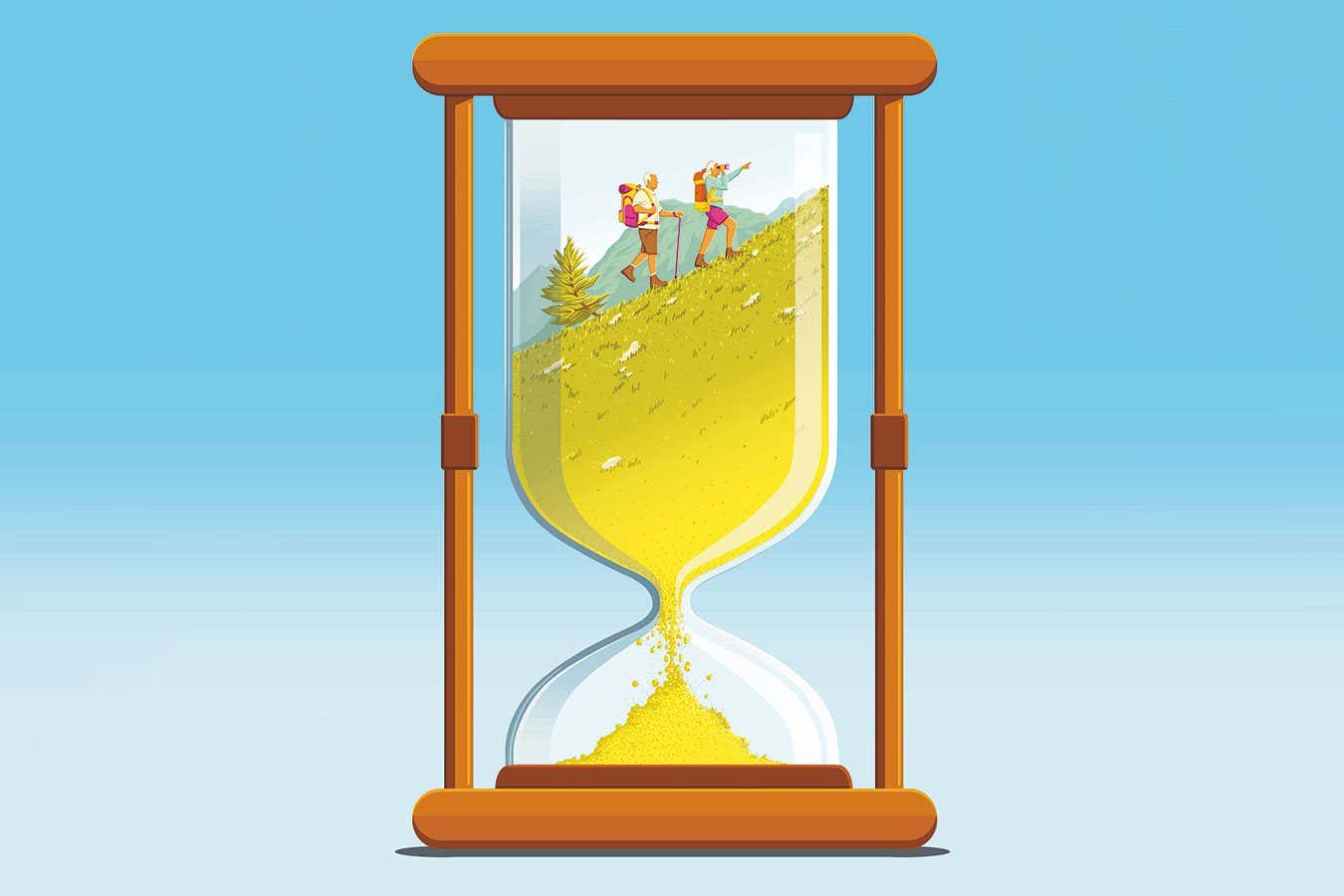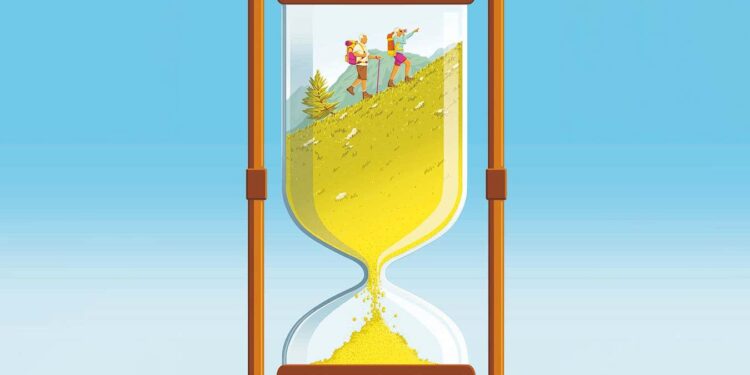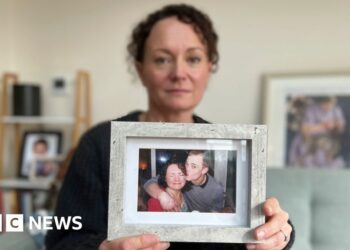
On 16 October 2029, I will – hopefully – become a member of the world’s fastest-growing demographic. By then, 1.4 billion people, a sixth of the world’s population, will be aged 60 or over. Assuming I make it, I can then expect to live for another 24 years.
I am the beneficiary of a global trend that started more than a century ago. A baby boy born in England in 1900 could expect to live to 44. By the time I was born, in 1969, that had risen to nearly 69. A baby boy born in England today can expect to live to 87, and a baby girl can expect to reach 90. Other places around the world, including lower-income countries, have also experienced rises in average life expectancy, buoyed by improved sanitation, nutrition and access to healthcare and education.
For the first time in human history, every person born today has a reasonable chance of celebrating their 60th birthday. But before we break out the cake and candles, we need to consider whether we will be able to blow them out.
For now, I’m in reasonably good health – but the longer my fellow soon-to-be sexagenarians and I live, the more likely we are to develop one or more age-related conditions. So are increases in life expectancy matched by increases in health expectancy? Or have we created a “nursing home world”?
These are surprisingly difficult questions to answer. But now, thanks to a new understanding of what health in later life looks like, we might finally have some answers. And not only is it positive news – mostly – we might also have a good idea of how we can stay healthier longer.
What is healthspan?
Gerontologists – researchers who study ageing – have long recognised that increasing average lifespan doesn’t automatically increase the number of healthy years of life. All those hard-won gains in life expectancy might merely extend the period of ill health, at great expense to individuals and healthcare systems.
“We all know that populations around the world are ageing rapidly,” says John Beard, professor of ageing at Columbia University in New York. “But what we’re not so clear on is, are those extra years being experienced in good health, better than previous generations, the same, or worse?” To answer that question, around 30 years ago, scientists working on ageing started using a concept called healthspan, which is defined as the number of years that a person lives in good health free from chronic illness or disabilities of ageing.
Assessing whether the beneficiaries of the longevity boom also enjoy an increased healthspan can yield depressing results. Last year, for example, Andre Terzic and Armin Garmany at the Mayo Clinic in Rochester, Minnesota, published an analysis of 20 years of data from 183 countries in the World Health Organization’s Global Health Observatory. Using a measure of healthspan called health-adjusted life expectancy, they calculated the average discrepancy between lifespan and healthspan, what they called the “healthspan-lifespan gap”. They found that while average lifespans rose by 6.5 years between 2000 and 2019, from 66 to 72.5, healthspans didn’t keep pace, rising by only 5.4 years to 63.3. In other words, the healthspan-lifespan gap grew from 8.5 years to 9.6 years.
The largest gaps were in higher-income countries: 12.4 years in the US, 12.1 in Australia, 11.8 in New Zealand and 11.3 in the UK. Across the board, women lived longer than men, but also had a larger gap by more than two years. “These results underscore that around the world, while people live longer, they live a greater number of years burdened by disease,” the authors concluded.
That might sound like the issue is settled, but according to Beard and others, the focus on healthspan distorts the true picture. As a concept, healthspan suffers from a lack of clarity – for one thing, it seems to assume that only diseases of age diminish healthspan, without considering childhood or lifelong conditions. For another, it’s too binary: “With healthspan, you’re either healthy or you’re not healthy,” he says. “But health is not like life and death: life and death is black and white; health is a continuum.”
Studies like these, he says, tend to assume that healthspan ends abruptly with the diagnosis of a major age-related condition. But that fails to capture what impact the condition is having on quality of life. “The problem is, a diagnosis doesn’t really tell you much about people’s experience,” says Beard. “Three people can have the same condition and each have a very different experience.”
There are also medical interventions that can dramatically reduce the health effects of an age-related condition without curing it. “The one I often use is arthritis of the hip,” says Beard. “If people have a hip replacement, they’ve still got arthritis of the hip, but they can get around and do what they want to do.”
Functioning fine
Other studies have looked at health experience from a different angle: functionality. In other words, regardless of the presence or absence of disease, can people still get on with their daily lives?
“When we get older, sure, there are bad things that happen to our bodies,” says S. Jay Olshansky, a researcher on ageing at the University of Illinois Chicago. “But many folks that make it to older ages have found ways to adapt to these changes.”
That is a better way of assessing health, but studies that use functionality as a metric have a weakness, says Beard. “Most of those studies have only looked at very severe losses of functioning, using tests that were designed to decide whether people needed care,” he says, meaning they tend to underestimate the loss of functionality from less severe illness and disability.
What has also been missing is a concerted effort to measure day-to-day functioning in all older adults and how it compares with that of previous generations, says Beard. “So that’s what we tried to do.”

Over the past few years, he and his colleagues have pioneered a new approach to the problem using a concept called “intrinsic capacity”. The idea first surfaced in 2015 in the WHO’s World Report on Ageing and Health, and it is fundamentally different from what has gone before. Based not on the presence or absence of disease or disability, it instead assesses a person’s ability to do things and live life in a way they personally value. So, for example, somebody with minor hearing loss may not be diagnosed with an age-related disease but may be less able to interact socially than they would like. Their intrinsic capacity, therefore, would be lowered. Alternatively, someone diagnosed with a disease of old age, such as osteoarthritis – and so technically at the end of their healthspan – may be perfectly able to live a fulfilling life.
When it was first developed, the concept was only nebulously defined, but Beard and others have since put it on a firm scientific footing. It can now be measured objectively as a composite of people’s functional level in five domains: locomotion, cognition, vision and hearing, psychological health and general vitality. “These come from objective measures, clinical tests of each of these domains,” says Beard.
Clinicians and researchers using this model assign scores to the individual domains, weigh them appropriately and, from there, determine an overall numerical score. That makes intrinsic capacity a useful tool for measuring how well individual people are ageing: it has been validated as a predictor of mortality from respiratory disease, for example.
Perhaps more importantly, it also tells us how well we are ageing collectively, finally providing an answer to the big question: are increases in lifespan also delivering increases in how long we stay healthy?
Living longer, better
To find out, Beard and his colleagues reanalysed figures from two existing datasets. One was the English Longitudinal Study of Ageing, which followed four cohorts of adults who were born in 1920, 1930, 1940 and 1950 and recorded information that could be converted into scores of intrinsic capacity. The other was the China Health and Retirement Longitudinal Study, a similar project following three cohorts born in 1930, 1940 and 1950.
The aim of the analysis was to find out whether people in later cohorts entered older ages with higher intrinsic capacity and retained it for longer, on average. What they found blew their minds. “I was expecting there wouldn’t be much change, if anything,” says Beard. “But I have to say I was surprised. We found very stark improvements for almost all dimensions.”
In the English cohorts, they found that somebody born in 1950 had higher intrinsic capacity at 68, on average, than a 62-year-old who was born in 1940, for example. The data from China told a similar story. And that is only comparing people born 10 years apart. If you compare the English 1950 cohort to the 1920 one, the differences are even starker. “It’s more like 70 is the new 50-something,” says Beard. “I can tell you that with absolute certainty.”
The data also showed some evidence of a phenomenon called compression of morbidity, which refers to the conditions of old age being squeezed into the final year or two of life, rather than piling up slowly over a decade or more. “Clearly, we don’t want people living for a long period of their life in poor health where they can’t do what they need to do. But if you enter older age with a higher peak, there’s further to fall, and you can maintain a good level of functioning for a longer period of time,” he says.
The reasons for this gain aren’t hard to fathom – they are essentially the same as the reasons for increases in lifespan. These include higher-quality nutrition, especially in early life, as well as sanitation, better education, expanded access to medical care and lifestyle factors such as declining rates of smoking. The result is that the peak in a person’s intrinsic capacity, which for all cohorts occurred at around age 30, is higher for later generations than earlier ones. After that, it is mostly downhill, although cognitive capacity can continue to increase, and other domains can be improved with the right interventions. The most important takeaway, however, is that the higher the peak – the more intrinsic capacity at around age 30 – the longer it takes to descend.
Good news? Not so fast. The results only apply to the cohorts in the studies and can’t be generalised, although Beard says he expects to find similar improvements in datasets from other places. There are around 25 such studies from all over the world waiting to be analysed, he says.
It is also possible that the lower healthspan in older cohorts reflects early-life exposure to major upheavals, says Beard, such as the great depression, the second world war or the Chinese civil war, which ended in 1949. “It may be that the people born in 1950 had better nutrition, better learning environments, better everything,” he says.
Crucially, the results also don’t tell us what has happened to cohorts born after 1950. It is probable that the gains have slowed, stopped or even reversed as improvements in conditions such as access to education and healthcare have plateaued or dropped off, says Beard. “The explanations lie in the broader environment, and that’s important because, why would it continue to improve?” he says. “There may be a ceiling that we have probably attained. I look at my kids and I don’t think their nutrition is any better than mine was.”

People born in 1950 had a higher intrinsic capacity at 68, on average, than those born in 1940 had at 62
REUTERS/Gil Montano
There are also factors such as increased obesity, sedentarism and pollution that may be pushing the intrinsic capacity gains back – trends in life expectancy certainly appear to be going that way. It is possible that people born in the 1950s in higher-income countries may be a golden generation who will live the longest, healthiest lives in human history. Only time will tell: people born in 1960 are now knocking on the door of old age, so trends in that cohort will start to appear soon.
Improving intrinsic capacity
While we wait for more data on the fate of our collective intrinsic capacity, there are ways to boost your individual score. You can start by estimating it using the WHO’s downloadable Integrated Care for Older People (ICOPE) screening tool. It includes a basic checklist for assessing intrinsic capacity, including a series of questions and tests on the five domains. To a medical professional, failure on any of these would lead to further in-depth assessment, but this tool gives anyone a rough indication of their intrinsic capacity, says Beard.
After you have your assessment results, you can get to work improving your score. Even though many determinants of intrinsic capacity are laid down in early life, “it’s never too late”, says Beard. “There are no surprises – eat a healthy diet, maintain a healthy weight, don’t smoke, address stress. The field where there’s probably the most evidence is physical activity, both aerobic to maintain your fitness but also building and maintaining muscle mass, particularly as you get older.” Physical strength and fitness not only help maintain balance, which protects against falls, but also seem to reduce inflammation and the risk of chronic disease. (I know what I want for my 60th birthday: a set of dumbbells.)
Whether the trend continues or not, the recognition that our later years are becoming healthier is great news, and not only for me and the 1.4 billion people turning 60 with me. “That is a really excellent message to support combating ageism,” says Yuka Sumi, who runs the WHO’s ICOPE programme in Geneva, Switzerland. “Many in society think older people are care-dependent and frail and a burden. And not only the society, older people themselves. But actually our older population is getting healthier and healthier. The older person is a social asset and they contribute to society.”
Understanding our later years in terms of intrinsic capacity can and is changing how we approach ageing. “In my view, the concept of intrinsic capacity is revolutionary in our understanding of ageing,” says Olshansky.
“We now have the privilege of living into our 70s, 80s, 90s and beyond in ways that previous generations never had an opportunity to experience,” he says. “When we get older, sure, there are bad things that happen to our bodies. But we’ve found ways to push them aside so that they’re no longer relevant.”
Topics:
Source link : https://www.newscientist.com/article/2489666-a-new-measure-of-health-is-revolutionising-how-we-think-about-ageing/?utm_campaign=RSS%7CNSNS&utm_source=NSNS&utm_medium=RSS&utm_content=home
Author :
Publish date : 2025-08-11 16:00:00
Copyright for syndicated content belongs to the linked Source.





